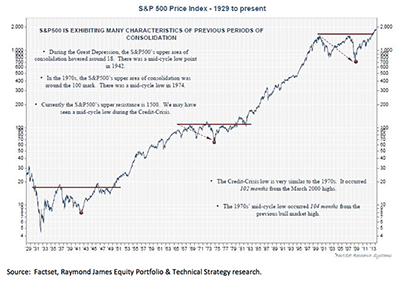“You Gotta Have Heart”
May 5, 2014
After the workshop, another student took us out to Claiborne, the thoroughbred farm where Secretariat was buried. He was one of the great racehorses of all time. We went to his grave. He was buried in an eight-foot mahogany coffin with a gold satin lining. My student told me, “They don’t usually bury the whole horse, but he was special. Hundreds of people came to his funeral.”
“Well, what do they bury if they don’t bury the whole horse?” I asked. “Most horses they don’t bury at all. With the real winners, they bury the head, the hooves, and the heart,” she told me. “The heart?” I asked astonished. “Yes, that’s what a horse runs with, his heart. That’s why they say that a horse has heart. If they’ve got heart, it makes up for other things, they can still win,” she explained.
... Long Quiet Highway, by Natalie Goldberg
Secretariat (3-30-70 – 10-4-89) is considered the greatest American racehorse of all time. In 1973 he became the first Triple Crown winner in 25 years, and in the process he set records in all three races that still stand today. In the Kentucky Derby his time was 1:59 2/5, in the Preakness it was 1:53, and in the Belmont Stakes 2:24. Secretariat was foaled at “The Meadow” in Doswell, Virginia, a horse farm just north of Richmond, Virginia. The owner was a wonderful woman named Penny Chenery, also referred to as Penny Tweedy. But to us kids, she was Ms. Tweedy. As a teen, I actually got to see Secretariat because we had a small horse farm nearby. Following his death, a necropsy revealed Secretariat’s heart was significantly bigger than that of an ordinary horse. A large heart gives a horse more stamina than most other horses; aka, “that’s what a horse runs with, his heart!”
Over the weekend the favored California Chrome won the Kentucky Derby in the pedestrian time of 2:03.66, as compared to Secretariat’s 1:59 2/5. Still, it is a good bet that California Chrome possesses an oversized heart like other potential Triple Crown winners. Similarly, in the stock market, one has to have “heart,” and conviction, to make money. It takes a good many years of study and market experience to fully realize the importance of the primary direction of the D-J Industrial Average, is it bullish or bearish? It reminds me of a Wall Street wag from an era gone by nicknamed “Old Turkey” written about by Benton Davis. When investors asked Old Turkey, “What do you think I should do?” Old Turkey would simply cock his head to one side, contemplate the investor’s question, and say, “You know it’s a bull market.”
That phrase has sprung from my lips many times since the valuation low of October 4, 2011. Recall the characteristics of the market when it breaks out of a base that exceeds 10 years in length is different. Investor behavior reflects an underlying distrust or disinterest and is characterized by underinvestment in equities. This results in a rebound that is relentless, providing little opportunity to buy stocks on pullbacks. Now study the attendant chart on page 3 and notice how similar the three multi-year trading ranges that have occurred since the 1929 “Crash” are. The arrows, and dots, represent the nominal price low, the lowest in price the S&P 500 would get. In subsequent years a valuation low is achieved, or the lowest the averages would get in term of valuation (price/book, P/E, price /sales, etc.). In the most recent range-bound market, the valuation low occurred on the undercut low of October 4, 2011. Of interest is that every time the stock market has broken out to the topside of a long-term trading range it has taken investors years before they embraced equities. For example, when the Dow decisively broke above its January 1973 high of 1051.70 in 1983, it took professional money managers three to four years to embrace stocks. And, the individual investor didn’t return until 1987, after the market was up ~13% in one month, and then they got freaked out by the 1987 crash. Now study the chart again and consider that every time we have broken out of the upper band of a multi-year range-bound market we have been in a new secular bull market.
Last week that happened again with the D-J Industrials (INDU/16512.89) notching another new all-time high, thus confirming a similar move by the D-J Transports (TRAN/7698.84) a week earlier. That, ladies and gentlemen, is yet another Dow Theory “buy signal” reaffirming that the primary trend of the market is up. For the week the Industrials were better by 0.93% while the Transports improved 1.49%. The performance from the economically sensitive Trannies is interesting given the much weaker than expected +0.1% advance GDP report. As our economist Dr. Scott Brown noted, “Details were a mixed bag. Foreign trade and inventories subtracted, as anticipated. Consumer spending growth was a lot stronger than expected. We did get a partial rebound from October’s government shutdown, but defense and state & local government subtracted. Inventory growth slowed, but still appears to be too high relative to the pace of final sales. This report should not change the outlook for Fed policy.” From Scott’s lips to the Fed’s ears because Friday afternoon’s Fed policy statement did not surprise. There were some minor differences in the description of the economy, but nothing that implies a sharp change in the Fed’s outlook.
While much has been made regarding the weak advance GDP report, it should be noted the Chicago PMI, the ISM, and the employment reports were all stronger than estimated. I did receive numerous questions about the low employment participation rate and how scary that is for consumer spending, but consider this. The first boomer turned 18 in 1964 and the participation rate began to rise. The first baby boomer turned 60 in 2006 and the participation rate has been declining ever since (see chart on page 3). With 10,000 boomers retiring per day, this trend has very “long legs.” In fact, our technical analyst David Hydrick found this surprising quip on PR Newswire:
Widespread Labor Shortages Ahead for the U.S. - For Now, Jobs Remain Scarce - But an Aging Population and the Recession’s Aftermath Are Poised to Create Historic “Seller’s Market” for Skilled Workers - PR Newswire ... new study from The Conference Board. From a Buyer’s Market to a Seller’s Market predicts unemployment in the United States — currently 6.7 percent and falling rapidly — will reach its “natural rate” of 5.5 percent by late-2015. The decline will continue well past this benchmark; over the next 15 to 20 years, U.S. unemployment may even dip below 3.8 percent, the lowest rate recorded since the 1960s.
The call for this week: I am actually in town this week and am hosting a conference call with Warren Koonze, Co-Portfolio manager for the Loomis Sayles Capital Income Fund and Loomis Sayles Value Fund on Wednesday, May 7th at 4:15 p.m. We will be discussing those funds, stocks, and the various markets. Speaking to the markets, both the Industrials, and the NYSE Composite tagged all-time highs last week. That move was confirmed by the NYSE Advance/Decline Line’s new all-time high. However, the number of stocks making new highs, or lows as a percent of the S&P 500 (SPX/1881.14), is shrinking, suggesting a smaller number of stocks are keeping up with the major market averages. This morning the preopening SPX futures are down about 7 points on soft Chinese manufacturing data and heavy fighting after Ukrainian forces were ambushed in the city of Slaviansk. It was also revealed that some of the alleged pro-Russian protestors in the Ukraine are actually Russian troops not in uniforms.


















